To preserve the harvest, it must be harvested on time and properly prepared for storage.
Signs of head maturation
Garlic ripens very evenly. Signs of maturation are:
- yellowing of the lower leaves;
- drying of the outer films and their acquisition of a color characteristic of the variety;
- easy separation of cloves;
- straightening of arrows, previously rolled into rings, in shooting varieties;
- cracking of boxes with bulbs;
- tops lodging.
These signs are an indicator of technical maturity, when the processes of bulb formation are not yet completed and end after harvesting.
Cracking of the heads (physiological maturity) indicates that the cloves are ready to germinate and the crop needs to be harvested urgently. But this is not always a sign of maturity. Often even unripe heads crack when planting garlic after potatoes.
Garlic harvesting time
Harvesting time depends on the method of growing the crop.
| Characteristics | Varieties of Garlic | |
| Winter | Spring | |
| Growing season | 90 – 120 days | 120 days or more |
| Garlic harvest time | Mid - end of July | Late August-early September |
The cleaning time is affected by weather conditions. In cold, damp summers, harvest ripening is delayed by 5-10 days.
Garlic cannot be harvested too early, as it will not store well. When harvested late, the heads fall apart into individual cloves. The optimal time comes when the arrows straighten and the inflorescence box begins to open. If there are no arrows, then they focus on the tops: when they fall down, they begin harvesting.
The ripening time of garlic heads can be increased or decreased using various agricultural practices.
Pre-harvest activities to improve crop quality
2 weeks before technical maturity, the arrows straighten, the garlic stops growing, and the bulbs begin to fill. At this time, the leaves are crushed or tied in a knot to enhance the outflow of nutrients from the stems and leaves to the heads. In this case, the ripening period increases by 10-14 days.If the summer is very rainy, then this technique is not used, since long-term exposure of the heads to wet soil leads to them being affected by fungal diseases.
When the inflorescences begin to straighten, the soil from the bulbs is raked halfway so that there is air access to the cloves. It is especially necessary to do this in wet weather. If this is not done, then due to the increased moisture content in the soil, the penetration of air to the roots becomes difficult. The cloves begin to experience oxygen starvation and die as a result. This phenomenon is called soaking. Raking the soil promotes normal respiration of the bulbs and accelerates their formation by 3-5 days.
When to remove garlic from the garden, drying garlic
When the tops fall down and begin to dry, the plants are dug up. You cannot delay harvesting, since mature garlic germinates easily. You can't harvest garlic after it rains. It is unacceptable to pull plants out of the ground, as this can damage the bulb. The dug up heads are left in the air for 5-6 hours so that they ventilate and dry. At night, the harvest is stored in the barn.
Garlic is dried along with the tops for 12-15 days in sheds or attics, laying it out in 1-2 layers. In sunny, dry weather, the boxes are taken out into the open air.
Plants dry very well and quickly in a greenhouse, where there are ideal drying conditions. The boxes with the harvest are placed in a greenhouse and left for 8-10 days. The plants are turned over from time to time so that the lower heads are on top. The greenhouse is left open even at night. Properly dried garlic has an elastic stem that bends well, but does not break.
Plants with arrows are left on the beds for 7-10 days after harvesting the main crop.When the flower stalks begin to turn yellow, they are cut, tied into bunches and dried in the shade for 20-25 days. During this time, the bulbs will fill up, become much larger and acquire a color corresponding to the variety.
Preparation for storage
At the end of drying, the bulbs are cleared of soil, the roots and stems are cut off and stored.
Clearing the ground consists in removing 1-2 layers of integumentary scales. You should not remove more layers, as they protect the head of garlic from excess moisture evaporation during storage. If you remove too many scales, then after 1-2 months the cloves will begin to dry out.
Root pruning. The roots are cut at a distance of 2-5 mm from the bottom, and the remaining ends are singed. This prevents the cloves from sprouting during storage and the heads being damaged by barn pests. The roots of the seed material are not burned.
Tops trimming. Dry tops are cut off, leaving a neck of 2-3 cm. If the garlic is stored in braids, then 30-40 cm of the stem are left, if in bunches - then 15-20 cm.
Peduncles with aerial bulbs are tied into bunches and stored separately.
General rules for storing garlic
Ideally dry bulbs are stored for storage. They are stored in a dark place at a temperature of 3 to 22°C and a humidity of no more than 70% in places where there is no strong air circulation.
Methods for preserving crops in a private house and in a city apartment are different. Garlic is best stored at low positive temperatures (3-6°C) in a cellar or attic where conditions are close to optimal.
In apartments, the crop is preserved well at 18-22°C in a closed space without drafts. Bulbs should not be stored in rooms with high humidity (kitchens, bathrooms) or in places where the air temperature is above 22°C (near radiators, on cabinets, mezzanines).The most suitable place is the bottom shelves of cabinets in the hallway or pantry, where the temperature and humidity are not too high.
It will not be possible to store garlic in the refrigerator even if you want to, since the humidity there is very high. The heads quickly become damp and rot or mold. The maximum shelf life of garlic in the refrigerator is 7-10 days.
Cracked heads will last no more than a month. Since the cloves are not protected by a common integumentary scale, the process of respiration and evaporation is very intense, and they dry out quickly. They must be used first.
The shelf life of winter garlic is 6-8 months (depending on the variety), spring garlic - 8-10 months. During this period, the bulbs are immersed in a state of natural biological dormancy. At the end of the dormant period, metabolic processes in the cloves intensify, preparing for the beginning of the growing season. Therefore, the greatest difficulties arise in the second half of the crop’s shelf life. At this time, the heads are stored either at a temperature of 0-2°C (garlic germinates at +3°C), or at +20°C and above (if the temperature is too high, the germination of the cloves slows down).
How to store garlic
There are several ways to preserve garlic:
- in braids, wreaths, buns;
- in nets and baskets;
- in linen bags;
- in boxes, boxes;
- in banks.
It is good to store garlic in braids, bundles, baskets, nets if you have a barn, attic or at least a dry basement. Storage in jars is suitable for apartments. Other storage methods are suitable for both a private house and an apartment.
Storing garlic in braids.
This is the most common way to preserve garlic. Braids take up little space, and it is easier to control the occurrence of spoilage with this storage method.
When storing in braids after drying, leave 30-40 cm of tops. To weave a braid, you need a strong thin rope, twine or flexible wire.
Braiding technique.
Take 3 heads and tie them at the base with a rope. This results in four ends: three stems and a rope, which, when weaving, must always be intertwined with one of the stems.
Make the initial binding.
Then, after each weave, a new head is added to the braid.
The braids should not be very long, otherwise they will break under their own weight. You can braid garlic like a wreath, twisting the stem around the neck of the previous head. Store braids and wreaths in sheds at a temperature of 3-6°C or in an apartment closet (at 18-22°C). But in an apartment, garlic braided into braids does not last long. To prevent braids and wreaths from falling apart, the heads are not pulled out along with the tops, but cut off, then the stem remains inside and the braid does not fall apart.
You can simply tie the heads into a bunch of 15-20 pieces and hang them in the barn or attic. You cannot hang braids in the kitchen for long-term storage.
Storage in baskets and nets
The bulbs are laid in 3-4 layers; if there is high humidity in the storage room, then they are sprinkled with onion peels. The baskets are placed in a dark place, the nets are hung on the wall. The crop is preserved better in baskets than in nets.
Storage in linen bags
Garlic is placed in bags made of natural fabrics and sprinkled with salt to protect it from moisture. The bags are placed on pallets or the bottom shelves of boxes close to each other.
Storage in boxes and boxes
Boxes and crates should have holes to allow for slight air circulation. The garlic is laid out in 3-4 layers; in rooms with high humidity, each layer is sprinkled with salt.The top layer of the heads is covered with 1-2 cm of salt. Salt absorbs excess moisture and prevents the heads from rotting and molding.
Storing garlic in jars
Unpeeled garlic is placed in glass jars. Small onions are placed whole, large ones are divided into cloves. The jar is closed with thick paper or a perforated nylon lid. This is the best way to preserve garlic in a city apartment.
Storing bulbs
If the seeds are sowed in the spring, then the dried arrows with bolls are tied into bunches and stored in a barn at 2-4 °C. In the apartment they can be stored on an insulated balcony. Place gauze bags over the inflorescence to prevent the bulbs from falling off. 2 months before planting, aerial bulbs are separated from the peduncle, cleaned of impurities and stored in bulk at a temperature of 12-15°C.
Additional means used for storing garlic
In addition to the above, there are other ways to preserve crops, but they are used relatively rarely due to their labor intensity.
| Storage method | Description | Advantages | Flaws |
| In cling film | The head is wrapped tightly in cling film. The rest of the stem is left open, through which the bulb breathes | Prevents the cloves from drying out. | Closer to spring, when breathing intensifies, rot may appear |
| In paraffin | The head is lowered into melted hot paraffin, then the excess liquid is allowed to drain, dried and put into boxes. | The film formed on the surface prevents the evaporation of moisture, the cloves do not dry out and remain fresh and juicy until spring. This method reliably protects the head from fungal diseases. | The method is very labor intensive |
| In flour | Lay the garlic in layers, sprinkling each layer with flour. | Flour absorbs excess moisture. | Very expensive storage method |
| In the ash | The bulbs are laid in layers, sprinkled with ash. The top layer of heads is completely covered | Ash reliably protects from excess moisture and does not impede the normal breathing of the bulbs | Not every person would risk covering garlic with ash. |
The main goal with any storage method is to preserve the juiciness and freshness of the cloves for as long as possible and to prevent damage to the harvest.
Possible problems when storing garlic
Main problems encountered during storage:
- molding and rotting of heads;
- drying of the cloves;
- color change;
- germination;
- damage by barn pests (root and flour mites).
Mold and rotting of the crop occurs due to increased air humidity. It is necessary to sort, remove damaged bulbs, dry the rest for 5-6 days near a radiator or on mezzanines and put them in a dry room. If the air humidity is high, then sprinkle the remaining garlic with salt.
Drying garlic cloves. In winter varieties, natural drying occurs towards the end of the storage period. It can be slowed down for several weeks by wrapping the heads in cling film. If the garlic begins to dry long before the end of the period, then the reason is too dry air. The heads can be placed in the refrigerator for several days, where the respiration processes slow down. But you don't need to keep them there for too long, otherwise they will become damp and rot. To prevent further drying, the bulbs are treated with paraffin or wrapped in cling film.
Changing the color of the teeth at the base turns yellow, indicating damage by a stem nematode. In summer, the pest lays eggs in the bottom of plants and the soil around them.Garlic infected with nematode eggs does not store well. They sort it out, separate the diseased heads from the healthy ones and burn them. All seed material, even if no pest damage is detected in it, must be treated with an insecticide, then dried and continued to be stored under the same conditions.
Germination. The cloves that begin to sprout are cleaned and filled with vegetable oil. In this form they can be stored for a very long time. You can cauterize the bottom with fire, but if the process has already begun, then it cannot be stopped. Sprouted cloves lose their firmness and elasticity and are unsuitable for consumption.
Damage by barn pests is extremely rare. Garlic is mainly affected by root and flour mites. Pests penetrate the clove through the bottom and feed on its juices. The bottom gradually becomes rotten and falls off. If there is a risk of infection, sprinkle the garlic with powdered chalk during storage. If infection is detected during storage, the heads are placed in an oven preheated to 100°C for 1-1.5 minutes. After this, the bulbs are sorted, those affected by mites are selected and burned.
There are several ways to preserve garlic. This way you can avoid significant problems and determine which storage method is best.
You may be interested in reading other articles about growing garlic:
- Planting and caring for winter garlic.
- Rules for planting and caring for spring garlic.
- How to feed garlic
- Characteristics of varieties of winter and spring garlic.
- Why do garlic leaves turn yellow?
- How to get large heads of garlic
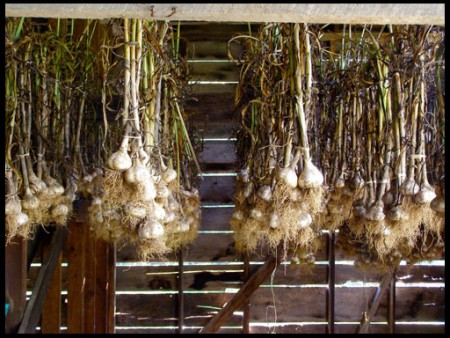
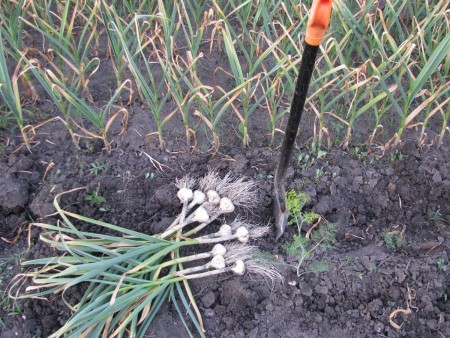
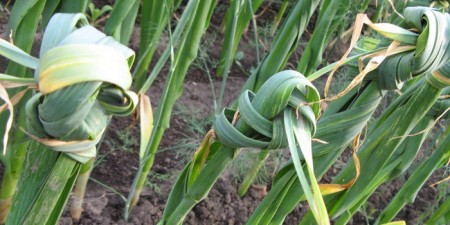
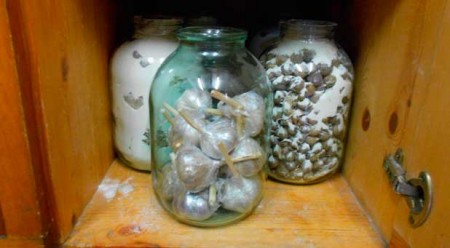
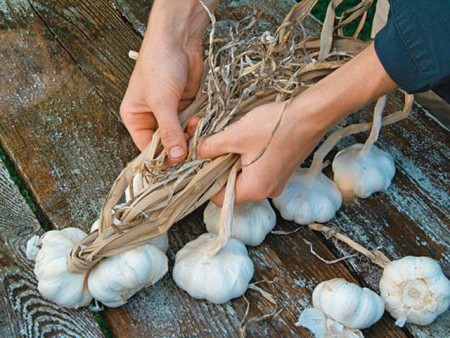
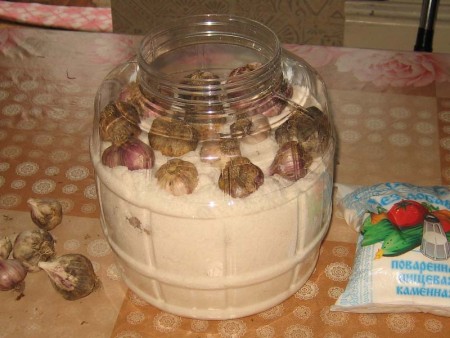
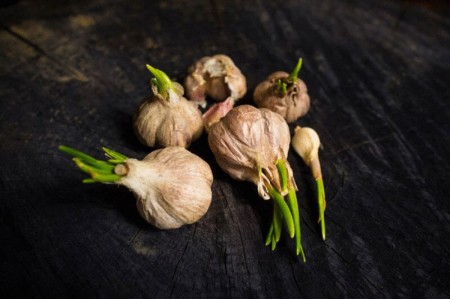

 (6 ratings, average: 4,33 out of 5)
(6 ratings, average: 4,33 out of 5) CUCUMBERS NEVER GET SICK, I'VE BEEN USING ONLY THIS FOR 40 YEARS! I SHARE A SECRET WITH YOU, CUCUMBERS ARE LIKE THE PICTURE!
CUCUMBERS NEVER GET SICK, I'VE BEEN USING ONLY THIS FOR 40 YEARS! I SHARE A SECRET WITH YOU, CUCUMBERS ARE LIKE THE PICTURE! You can dig a bucket of potatoes from each bush. Do you think these are fairy tales? Watch the video
You can dig a bucket of potatoes from each bush. Do you think these are fairy tales? Watch the video
 How our fellow gardeners work in Korea. There is a lot to learn and just fun to watch.
How our fellow gardeners work in Korea. There is a lot to learn and just fun to watch. Eye trainer. The author claims that with daily viewing, vision is restored. They don't charge money for views.
Eye trainer. The author claims that with daily viewing, vision is restored. They don't charge money for views. A 3-ingredient cake recipe in 30 minutes is better than Napoleon. Simple and very tasty.
A 3-ingredient cake recipe in 30 minutes is better than Napoleon. Simple and very tasty. Therapeutic exercises for cervical osteochondrosis. A complete set of exercises.
Therapeutic exercises for cervical osteochondrosis. A complete set of exercises. Which indoor plants match your zodiac sign?
Which indoor plants match your zodiac sign? What about them? Excursion to German dachas.
What about them? Excursion to German dachas.